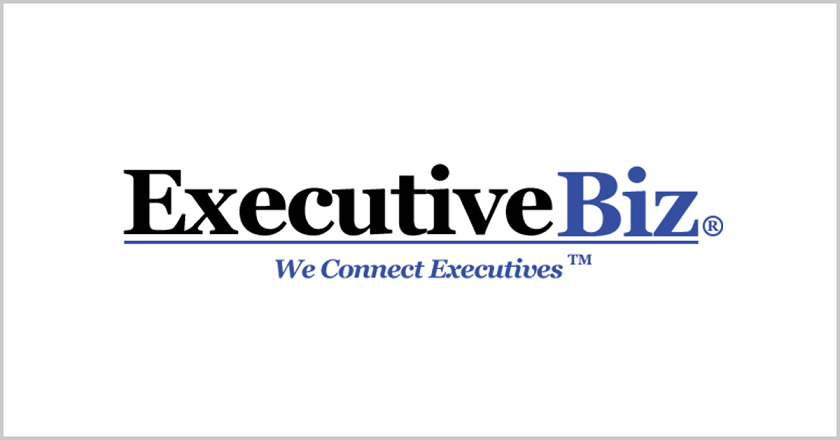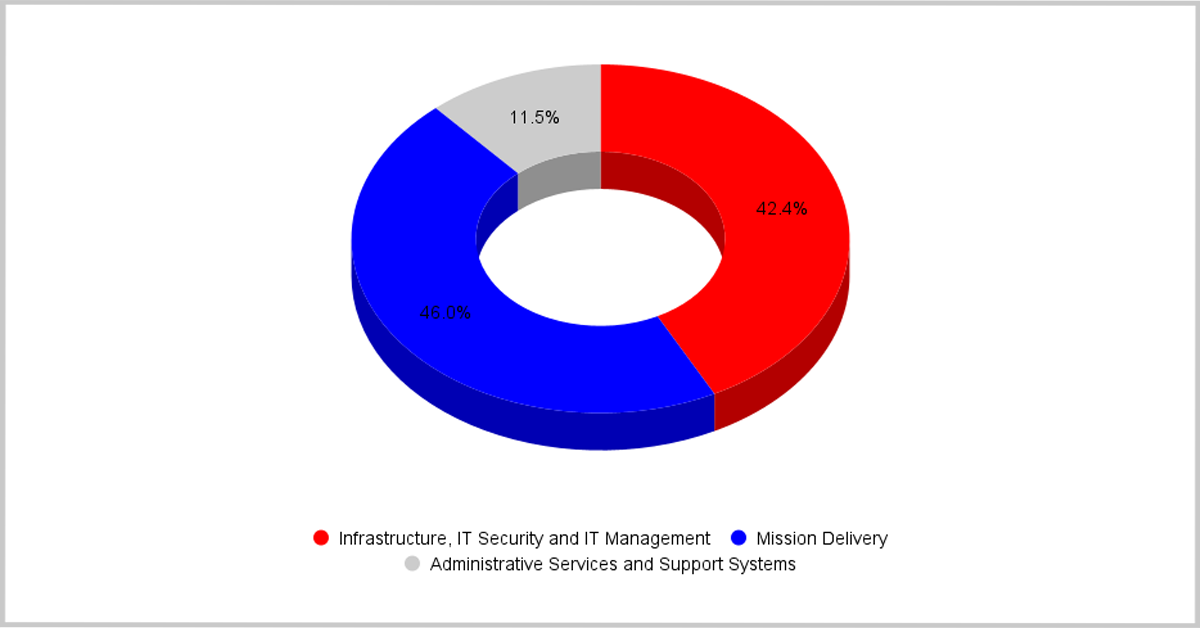Government IT spending continues to rise, and government agencies are mainly responsible for it. While the federal government is making a concerted effort to cut costs and streamline operations, the total continues to climb across all areas.
For the fiscal year 2022, the White House proposed an IT budget of $109.4 billion. This includes the $$58.4 billion for civilian agencies, approximately $12.4 billion for the Pentagon, and $38.6 billion for the Department of Defense. It’s an 18.7% increase from last fiscal year’s total budget, which is the highest ever, as seen in the federal spending data.
This article will focus on the most significant factors affecting the government’s IT spending, the top agencies involved, and how to spend smarter to cut costs for the long term.
Table of Contents
What are the biggest factors affecting federal government IT spending?

IT spending is expected to increase 11% by 2023 as the government modernizes IT to improve efficiency and productivity while providing better services to its citizens. Here are examples of factors influencing IT spending:
1. Rampant increase of cybercrimes
As cybercrime increases worldwide, it’s becoming a greater priority for governments and businesses to invest in cybersecurity measures such as firewalls, antivirus, and software and encryption tools to protect data against hackers who might steal sensitive information or cause other serious damages through locking and stealing files until victims pay them off with ransom money.
In 2021, the FBI reported that it received 2000 internet cybercrimes daily. Another incident in 2018 was the breaching of NASA’s Jet Propulsion Laboratory, where its hacker was able to steal about 23 files amounting to a half gigabyte of data using a cheap computer, Raspberry Pi.
2. Adopting a hybrid workplace
On June 10, 2021, Biden’s administration announced that federal agencies would start working on a hybrid setup. The Office of Personnel Management, GSA, and Office of the Management and Budget issued the memorandum.
This means cybersecurity will remain the highest priority due to the 150% rise in ransomware attacks since 2021. It resulted in 61% of malware attacks mainly targeting remote workers, which is why remote workers require more support regarding security concerns, accounting for the increased network and government spending budgets.
3. Advancement of citizen digital identity and cloud strategies
Another significant factor driving IT spending data is cloud computing, which the federal government has used since 2009. Expenses of cloud computing only represent a small fraction of the budget. Market researchers have estimated that the federal government yearly allocates $1 to $7 billion on cloud computers.
Digital identity management refers to technologies used by agencies to identify and authenticate users online and manage access privileges for online applications and services. It has been used by the military personnel and the Department of Defense (DOD). It has recently gained traction among civilian agencies due to mobile technology and cloud computing infrastructure advances.
4. Modernization of defense against cybersecurity attacks
In a Washington Post report in 2021, Congress announced that cybersecurity defenses would be a priority for 2022. The federal cybersecurity defense modernization was mainly in response to the recent incident by Russian hackers in the systems of a hundred American companies and nine federal agencies, including the Department of Commerce, Treasury, and Justice, that remained undetected until December.
It was detected by a private cybersecurity company, FireEye, which found it in SolarWinds software. This prompted the Government Accountability Office (GAO) to declare federal cybersecurity as one of the most urgent and riskiest areas that need to be addressed.
Other notable information technology modernization is shared services, cloud adoption, and IPv6. At the same time, the Treasury Department included a 20% increase in funding enacted last year, leaving a total of $16.2 billion to strengthen defenses against attacks from high-profile entities and implement the zero-trust strategy for vulnerabilities.
Highlights of government IT spending

President Biden aims to increase the annual federal IT spending consistently. His budget request included the $58.4 billion for the new administration’s agency-level maintenance and technological improvements. It will improve the delivery of critical services, keep systems secure, keep sensitive information, and improve the digital government’s vision. Also, it includes funding for over 4500 IT investments supporting at least 25 agencies’ missions and other significant IT investments. It’s broken down into three portfolio areas:

Federal financial data of civilian agencies
Biden’s budget for this fiscal year aims to improve the cyber and IT workforce to make the nation’s government a desirable employer for high-profile professionals, strengthen our abilities to see and administer government-wide projects, and effectively deliver services to American citizens. These are among the top 25 agencies that ranked the highest in the federal spending data:
1. Department of Veterans Affairs
The Veteran Affairs (VA) department is currently working on the most comprehensive information technology infrastructure modernization project in the federal government. It aims to support the easy transition of health care information through a citizen’s journey from doing military service to becoming a veteran.
Also, VA was concerned about the software and business gaps supporting VA logistics, infrastructure operations, and procurement systems. The Veteran’s Health Administration is adopting the Defense Department’s software platform, Defense Medical Logistics Standard Support (DMLSS) IT system for the VALOR program, which can improve and modernize its property, health care technology, and supply chain.
2. Department of Homeland Security
The budget of the Homeland Security Department aims to fund cybersecurity challenges and incidents mainly. The Cybersecurity and Infrastructure Security Agency (CISA) secured $650 million for the American Rescue Plan Act. CISA will use the funds to strengthen cybersecurity tools, employ highly qualified experts in the field, gather enough support services, and secure federal information technology systems.
3. Department of Health and Human Services (HHS)
HHS is one of America’s largest health insurers and one of the largest grant-making agencies. The agency ranks third in the list with the highest IT budget requests for this year, asking for almost 7 million, although there are few details on why they asked for that amount. It also asked for $715 million for cybersecurity measures, a 20% increase compared to the last fiscal year.
4. Department of Treasury
The International Revenue Service (IRS) is expected to receive $13 billion to fund taxpayer services that would let the IRS continue delivering services through methods of in-person, web-based, or telephone. It also has budgeted for IT modernization, such as the Business Systems Modernization Account platform.
5. Department of Transportation
The department of transportation proposed a budget for its multiple-year improvement projects. It has decided to receive $93 million for a shared-services environment for commodity IT investments. It also needs $39.4 million to improve IT infrastructure security, data protection, new identity, access management capabilities, and implementation of enhanced security controls on mobile devices and agency computers.
Five ways the government can save on IT spending

After getting through the biggest challenges of the global pandemic, all government sectors are facing financial strain. All expenses continue to escalate, and the need for more assistance, particularly in medical services and fiscal stimulus, is rising. Also, taxes and revenue have been dramatically affected too.
A significant decrease in GDP has been observed in the past years since 2019. The leaders continue to find answers to the questions: How to lower costs while maintaining high levels of impact? How to be effective with less spending? and so much more. Here are five ways the government can make it possible in IT spending:
1. Terminate at least 30% of the underperforming projects on information technology within the next two years
There are too many projects in the U.S. government that were started and abandoned before completion because they were already obsolete. According to a Boston Consulting Group survey, it estimated that around 70 to 80% of public sector IT projects, especially modernization, are failures, which is a waste of taxpayer dollars.
2. Look out for contractors overcharging for their products and services
There are often multiple options available at different prices for IT products. The government should insist on getting better deals by purchasing around from its various contractors before awarding contracts and ensure it’s not paying too much when buying new systems and replacing old ones. It can also hold contractors accountable when they overcharge.
In 2012, W.W. Grainger paid $70 million as a resolution for overcharging federal government agencies for hardware supplies when it could not disclose expenses and provide accurate audit information.
3. Cut down on federal centers
Multiple agencies use different systems for similar work and even use the same system with different features and capabilities. A good example is cloud computing, where agencies can choose different providers for similar services. The solution here is to eliminate duplicate services and units that are often labor-intensive, expensive, and slow.
According to the Department of Energy, federal centers currently account for about 2% of the total energy consumption in the U.S. In 2020, 24 agencies planned on closing 46 data centers and were able to close up 96 units, saving up close to $900 million.
4. Hire specialized IT acquisition professionals
It’s recommended that agencies hire more specialized staff to avoid overspending on software licenses and IT services. These may be chief information officers or chief technology officers. They have deep knowledge of how networks and computers operate to make informed decisions about hardware purchases and software licenses.
Some states, such as New York and Texas, have begun requiring these professionals at all state government levels through proposed executive orders. However, it’s not yet widespread nationwide.
5. Stop using outdated software
Biden’s budget proposal of $58.4 billion is mainly for IT modernization and enhanced security. According to a Technology CEO Council report, the federal government’s continued technological innovation could save over $1 trillion in the next decade in data and analytics, improper payments, cybersecurity, fraud, and more.
In addition, the General Services Administration has launched an effort to wipe out old software and transition to often less expensive cloud services and other new technologies. As the first federal agency to adopt Goodge’s cloud-based platform, it saved up to $2 million in 2012.





